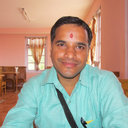Surgical management of third nerve palsy.
Keywords
Abstract
Third nerve paralysis has been known to be associated with a wide spectrum of presentation and other associated factors such as the presence of ptosis, pupillary involvement, amblyopia, aberrant regeneration, poor bell's phenomenon, superior oblique (SO) overaction, and lateral rectus (LR) contracture. Correction of strabismus due to third nerve palsy can be complex as four out of the six extraocular muscles are involved and therefore should be approached differently. Third nerve palsy can be congenital or acquired. The common causes of isolated third nerve palsy in children are congenital (43%), trauma (20%), inflammation (13%), aneurysm (7%), and ophthalmoplegic migraine. Whereas, in adult population, common etiologies are vasculopathic disorders (diabetes mellitus, hypertension), aneurysm, and trauma. Treatment can be both nonsurgical and surgical. As nonsurgical modalities are not of much help, surgery remains the main-stay of treatment. Surgical strategies are different for complete and partial third nerve palsy. Surgery for complete third nerve palsy may involve supra-maximal recession - resection of the recti. This may be combined with SO transposition and augmented by surgery on the other eye. For partial third nerve, palsy surgery is determined according to nature and extent of involvement of extraocular muscles.


